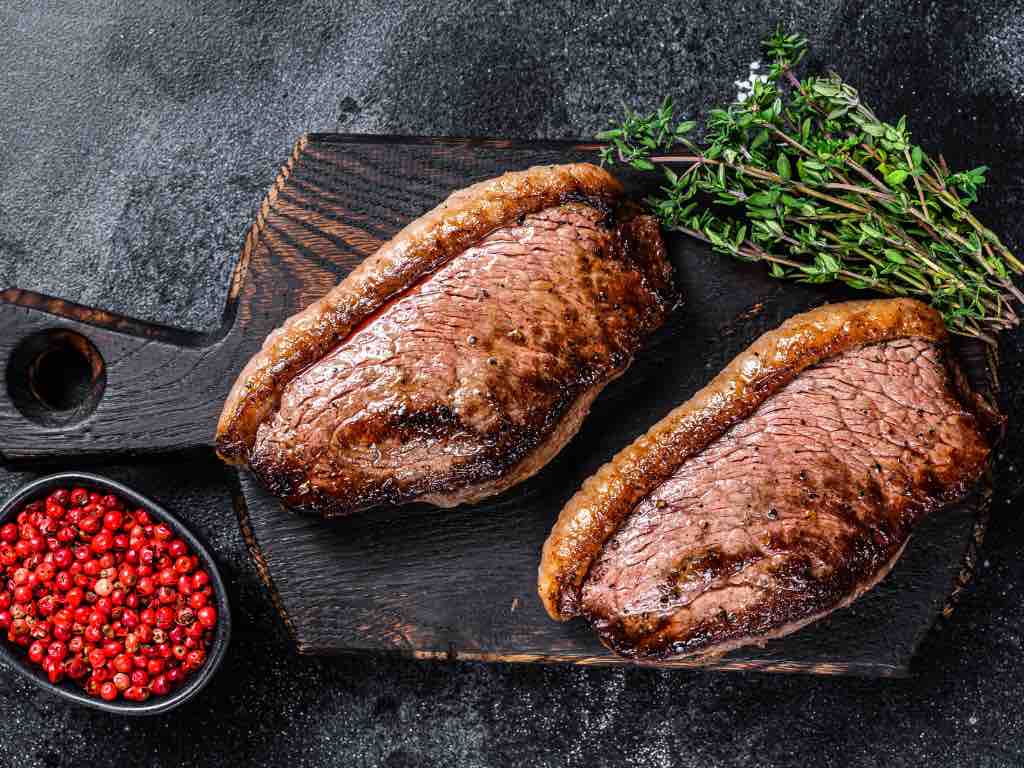
Mastering the Art of Reverse Sear Picanha: A Culinary Journey
|
|
Time to read 5 min
Welcome to One Stop Halal!
Written by: Samir P.
|
|
Time to read 5 min
Grilling enthusiasts and carnivores alike can attest to the joy of indulging in a perfectly cooked cut of beef. While many steak-cooking methods exist, the reverse sear has gained popularity for its ability to produce a consistently succulent and flavorful result. In this culinary exploration, we delve into the art of reverse sear picanha – a Brazilian favorite that promises a symphony of taste and texture.
Unlike traditional searing methods, where the steak is seared first and then cooked, the reverse sear flips the script. This technique involves slow-cooking the meat at a low temperature before finishing it with a high-temperature sear. The benefits of this method include a more uniform internal doneness, enhanced moisture retention, and a beautifully caramelized crust.
Begin your culinary journey by choosing a high-quality picanha cut. Look for well-marbled meat with a thick fat cap, as this will contribute to the final flavor and juiciness of the steak. Opting for grass-fed beef can also add a unique depth to the overall taste.
Before cooking, ensure the picanha is at room temperature. Season generously with kosher salt and pepper, allowing the flavors to penetrate the meat. Feel free to experiment with additional herbs and spices to personalize your seasoning blend.
For the reverse sear, a two-zone fire on your grill is essential. On one side, create a low-temperature zone (indirect heat), and on the other, a high-temperature zone (direct heat). This setup allows for a controlled cooking process, preventing flare-ups and ensuring a gradual, even cooking.
Place the seasoned picanha on the low-temperature zone of the grill. Slow-cook it until the internal temperature reaches your desired level of doneness. This step requires patience, as the goal is to let the meat gradually reach its optimal temperature without rushing the process.
Once the picanha approaches the desired internal temperature, transfer it to the high-temperature zone for the searing finale. This step is crucial for developing a mouthwatering crust on the outside while maintaining a perfectly cooked interior. Aim for a quick sear on each side to lock in the juices and create a delightful texture.
Allow the reverse seared picanha to rest for a few minutes before slicing. This resting period allows the juices to redistribute throughout the meat, ensuring a juicy and tender result. Slice against the grain to maximize tenderness and reveal the beautifully cooked layers.
Regarding flavor variations and pairings for picanha, numerous creative options. The goal is to enhance the natural richness of the meat while introducing complementary flavors. Here are some flavor variations and pairings to consider:
A classic Argentine condiment, chimichurri is a vibrant and flavorful sauce made with fresh herbs like parsley and cilantro, garlic, vinegar, olive oil, and red pepper flakes. The acidity and herbaceous qualities of chimichurri add a refreshing contrast to the richness of picanha.
Create a compound butter by mixing minced garlic, chopped fresh herbs (such as rosemary and thyme), salt, and pepper into softened butter. Spread this flavorful butter over the sliced picanha just before serving. The buttery goodness complements the beefy flavors.
Develop a smoky spice rub using ingredients like smoked paprika, cumin, garlic powder, onion powder, and a touch of cayenne pepper for heat. This rub will infuse a smoky and spicy kick, enhancing the overall taste of the picanha.
Reduce balsamic vinegar to create a thick and sweet glaze. Drizzle it over the sliced picanha for a delightful tangy-sweet flavor contrast. You can also add a touch of honey to the ice for extra sweetness.
Marinate the picanha in a mixture of Dijon mustard, minced garlic, olive oil, and herbs. Mustard adds a zesty kick and helps tenderize the meat. Ensure to let it marinate for a few hours to allow the flavors to penetrate.
A non-alcoholic version of the famous French sauce, Café de Paris, can be made with a blend of herbs, capers, anchovies, mustard, and mayonnaise. This savory and piquant sauce pairs well with the robust flavors of picanha.
Combine diced tomatoes, fresh basil, garlic, olive oil, and a splash of balsamic vinegar for a refreshing tomato and basil salsa. This pairs well with picanha, adding a burst of freshness.
Remember to tailor these variations to your preferences, and don't hesitate to get creative with herbs, spices, and condiments.
Welcome to your favorite Butcher Shop. We carry various butcher meat cuts that are hard to find elsewhere. We deliver to your doorstep anywhere in the United States within 1-2 business days.
Mastering the art of picanha reverse sear is a rewarding journey for any grill enthusiast or home cook. This technique transforms a quality cut of beef into a culinary masterpiece, boasting a perfect balance of tenderness, flavor, and texture. As you embark on your reverse sear picanha adventure, savor each moment and relish the joy of creating a steak that celebrates craftsmanship and taste.

© 2025 One Stop Halal, Inc.